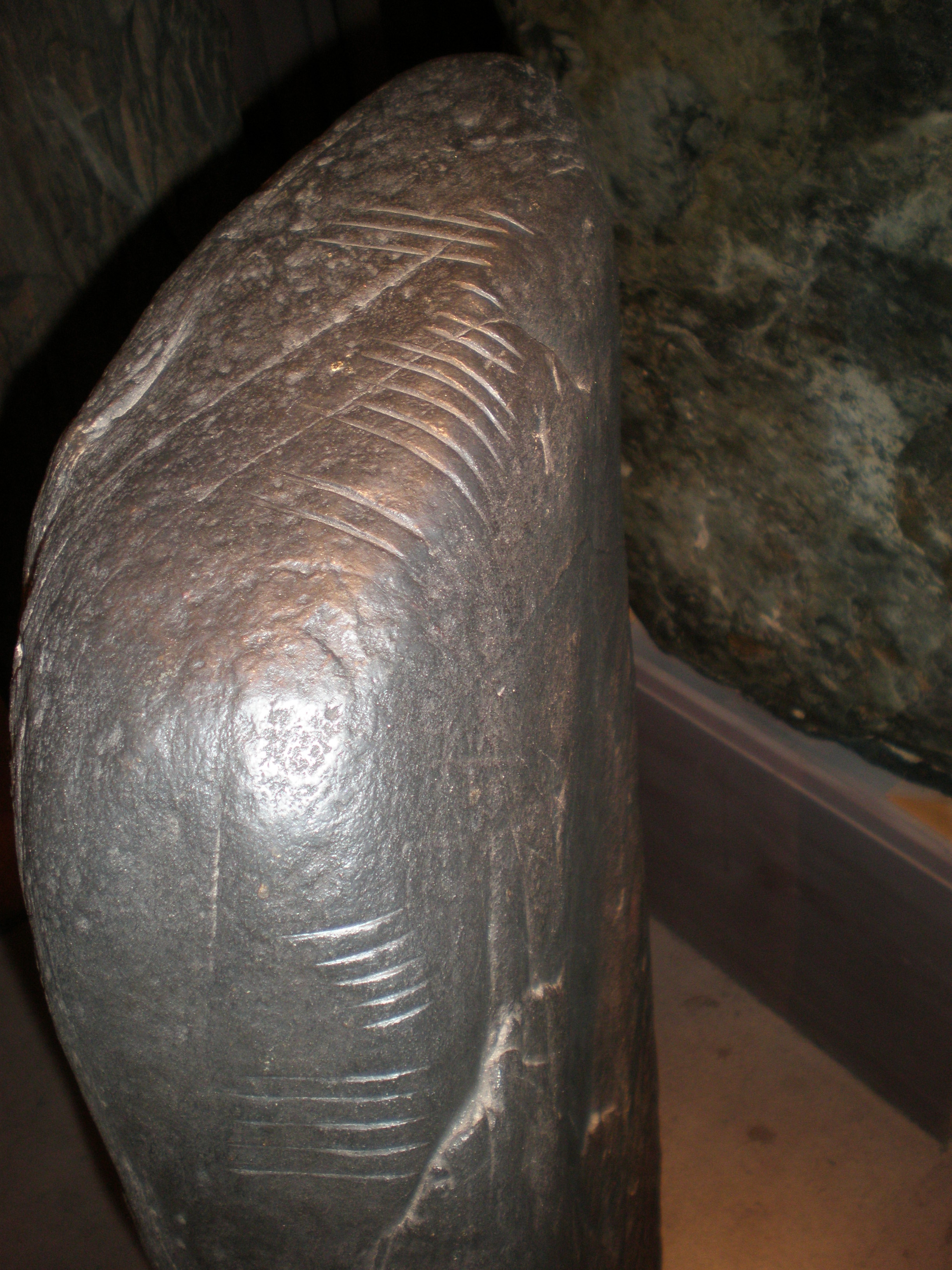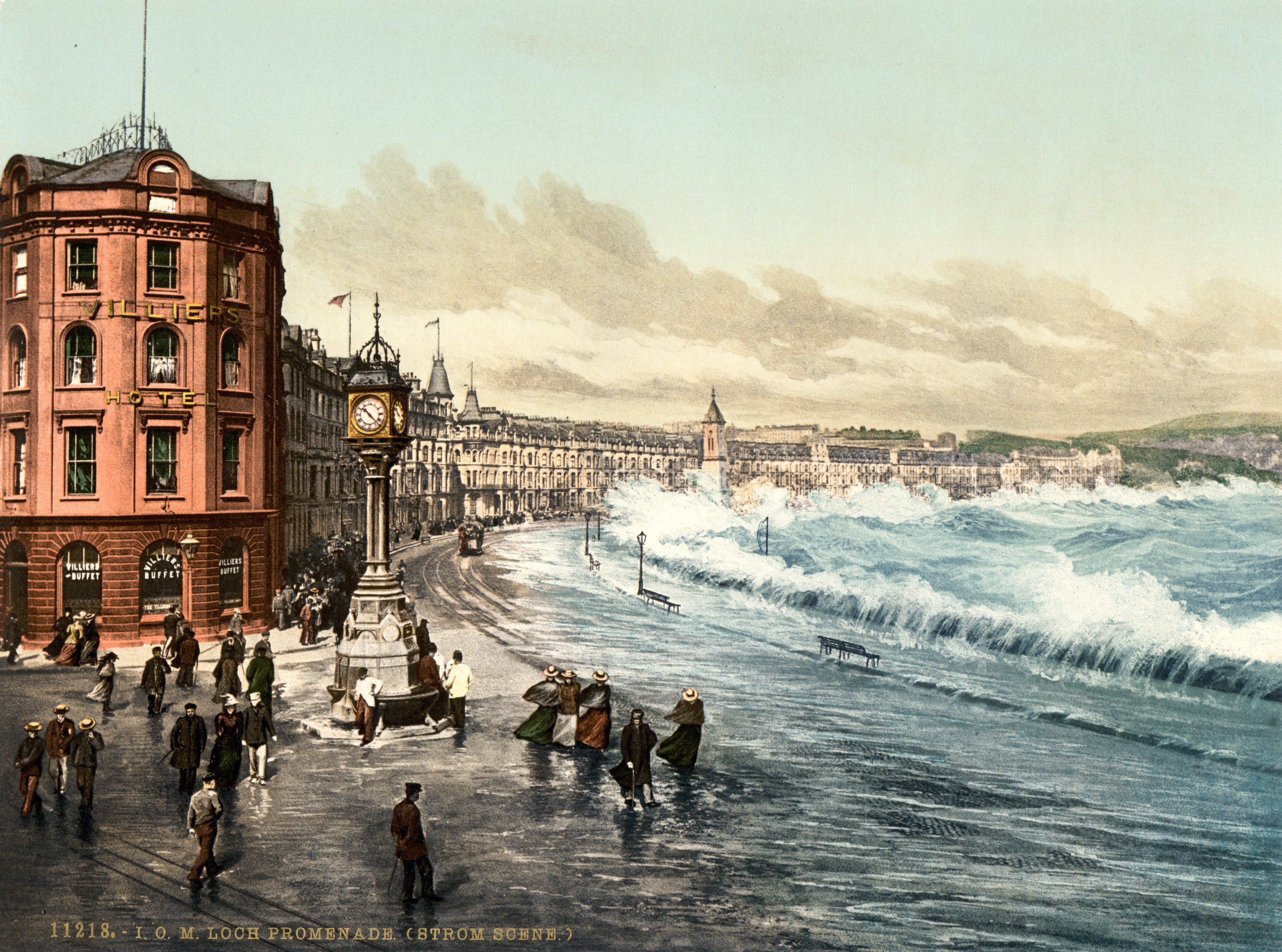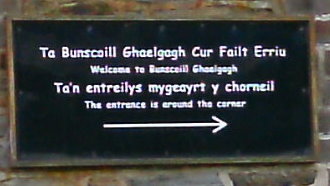|
Garwick Glen Halt
Garwick Glen Halt (Manx: ''Stadd Ghlion Garwick'') is a rural intermediate request stop on the east coast route of the Manx Electric Railway on the Isle of Man. Location The station lies between Douglas and Laxey and is situated in a small valley of the same name which opens into Garwick Bay. The place name derives from the Manx Gaelic meaning "pleasant bay" derived from an old Celtic word. History The station was once one of the busiest on the whole railway being home to the sprawling pleasure gardens of the same name which operated successfully until the close of the 1965 summer season at which time the station fell into private ownership. The station itself once boasted its own station master and covered waiting shelter for passengers as well as a rustic souvenir stand similar to those still found at Laxey Station today. The glen, with its topiaries and well kept gardens led down to the beach where the shoreline caves were marketed in contemporary literature for the statio ... [...More Info...] [...Related Items...] OR: [Wikipedia] [Google] [Baidu] |
Manx Electric Railway
The Manx Electric Railway (Manx: ''Raad Yiarn Lectragh Vannin'') is an electric interurban tramway connecting Douglas, Laxey and Ramsey in the Isle of Man. It connects with the Douglas Bay Horse Tramway at its southern terminus at Derby Castle at the northern end of the promenade in Douglas, and with the Snaefell Mountain Railway at Laxey. Many visitors take an excursion on the trams. It is the oldest electric tram line in the world whose original rolling stock is still in service. History The Manx Electric Railway was built by Alexander Bruce, a banker, Frederick Saunderson, a civil engineer and Alfred Jones Lusty, a land owner, who formed the Douglas Bay Estate company to develop land north of Douglas. Construction started in 1893 with the short line from a depot at Derby Castle Depôt in Douglas to Groudle Glen, and regular public services started on 7 September 1893. Anticipating the second stage of the railway (an extension from Groudle to Laxey), the company was ... [...More Info...] [...Related Items...] OR: [Wikipedia] [Google] [Baidu] |
Manx Language
Manx ( or , pronounced or ), also known as Manx Gaelic, is a Gaelic language of the insular Celtic branch of the Celtic language family, itself a branch of the Indo-European language family. Manx is the historical language of the Manx people. Although only few children native to the Isle of Man speak Manx as a first language, there has been a steady increase in the number of speakers since the death of Ned Maddrell in 1974. He was considered to be the last speaker to grow up in a Manx-speaking community environment. Despite this, the language has never fallen completely out of use, with a minority having some knowledge of it as a heritage language, and it is still an important part of the island's culture and cultural heritage. Manx is often cited as a good example of language revival efforts; in 2015, around 1,800 people had varying levels of second-language conversational ability. Since the late 20th century, Manx has become more visible on the island, with increa ... [...More Info...] [...Related Items...] OR: [Wikipedia] [Google] [Baidu] |
Isle Of Man
) , anthem = " O Land of Our Birth" , image = Isle of Man by Sentinel-2.jpg , image_map = Europe-Isle_of_Man.svg , mapsize = , map_alt = Location of the Isle of Man in Europe , map_caption = Location of the Isle of Man (green) in Europe (dark grey) , subdivision_type = Sovereign state , subdivision_name = United Kingdom , established_title = Norse control , established_date = 9th century , established_title2 = Scottish control , established_date2 = 2 July 1266 , established_title3 = English control , established_date3 = 1399 , established_title4 = Revested into British Crown , established_date4 = 10 May 1765 , official_languages = , capital = Douglas , coordinates = , demonym = Manx; Manxman (plural, Manxmen); Manxwoman (plural, Manxwomen) , ethnic_groups = , ethnic_groups_year = 2021 , ethnic_groups_ref = Official census statistics provided by Statistics Isle of Man, Isle of Man Government: * * , religion = , religion_year = 2021 , religi ... [...More Info...] [...Related Items...] OR: [Wikipedia] [Google] [Baidu] |
Douglas, Isle Of Man
Douglas ( gv, Doolish, ) is the capital and largest town of the Isle of Man, with a population of 26,677 (2021). It is located at the mouth of the River Douglas, and on a sweeping bay of . The River Douglas forms part of the town's harbour and main commercial port. Douglas was a small settlement until it grew rapidly as a result of links with the English port of Liverpool in the 18th century. Further population growth came in the following century, resulting during the 1860s in a staged transfer of the High Courts, the Lieutenant Governor's residence, and finally the seat of the legislature, Tynwald, to Douglas from the ancient capital, Castletown. The town is the Island's main hub for business, finance, legal services, shipping, transport, shopping, and entertainment. The annual Isle of Man TT motorcycle races start and finish in Douglas. History Early history In the absence of any archaeological data, the origins of the town may be revealed by analysis of the origin ... [...More Info...] [...Related Items...] OR: [Wikipedia] [Google] [Baidu] |
Laxey
Laxey ( gv, Laksaa) is a village on the east coast of the Isle of Man. Its name derives from the Old Norse ''Laxa'' meaning 'Salmon River'. Its key distinguishing features are its three working vintage railways and the largest working waterwheel in the world. It is also the location of King Orry's Grave. The village lies on the A2, the main Douglas to Ramsey road, and on the vintage Manx Electric Railway, and Snaefell Mountain Railway. Laxey Glen is one of the Manx National Glens; another glen, Dhoon Glen, is about 1 miles away. The Raad ny Foillan long distance coastal footpath, opened in 1986, runs along the coast of Laxey Bay through the village. History In the 19th century lead and zinc mining began; it became the largest industry in the village, but ended in 1929. The village also had a fishing industry.From a notable Manx fishing family living in Laxey in 1800s, Robert Lawson lived with his family in "Sea Villa" on the promenade. He converted this property from ... [...More Info...] [...Related Items...] OR: [Wikipedia] [Google] [Baidu] |
Manx Gaelic
Manx ( or , pronounced or ), also known as Manx Gaelic, is a Gaelic language of the insular Celtic branch of the Celtic language family, itself a branch of the Indo-European language family. Manx is the historical language of the Manx people. Although only few children native to the Isle of Man speak Manx as a first language, there has been a steady increase in the number of speakers since the death of Ned Maddrell in 1974. He was considered to be the last speaker to grow up in a Manx-speaking community environment. Despite this, the language has never fallen completely out of use, with a minority having some knowledge of it as a heritage language, and it is still an important part of the island's culture and cultural heritage. Manx is often cited as a good example of language revival efforts; in 2015, around 1,800 people had varying levels of second-language conversational ability. Since the late 20th century, Manx has become more visible on the island, with increased sig ... [...More Info...] [...Related Items...] OR: [Wikipedia] [Google] [Baidu] |
Laxey Station
Laxey Railway Station (Manx: ''Stashoon Raad Yiarn Laksaa)'' is an interchange station in the village of Laxey on the east coast of the Isle of Man. It is the principal intermediate station on the Manx Electric Railway (3' 0" (914 mm) gauge) as well as being the lower terminus of the Snaefell Mountain Railway (3' 6" (1067 mm) gauge, to accommodate a central braking rail). It is thus the island's only dual-gauge station, albeit with completely separate tracks. Some MER services from/to Douglas terminate here. Facilities The tin-roofed station building dates from the early years of the line and features the station name in large lettering painted on its roof. This building houses a booking office and a café as well as the station toilets, and was extensively refurbished in 1994, marking the centenary of the tram service to the village, though not on this site. Re-siting The first terminal was located on the site of today's sub-station, whilst the viaduct (at the souther ... [...More Info...] [...Related Items...] OR: [Wikipedia] [Google] [Baidu] |
Derby Castle Terminus
Derby Castle Terminus (Manx: ''Kione Stashoon Chashtal Derby'') is the southern terminus of the Manx Electric Railway. It is located on the north side of Douglas, Isle of Man; Douglas Station on the Isle of Man Railway is located on the south side of town, with the MER station being termed "Derby Castle" to differentiate between the two. Beginnings The site that now forms the station at Derby Castle is so called because the area to the north at that time housed the vast entertainment complex of the same name. The enterprising railway company owned the entire site, including the row of houses at Strathallan Crescent and the horse tram sheds and offices above. Behind this building lay the Calvary Glen which too was the property of the company until 1934. The houses of the crescent were sold off in 1978 when the entire railway network became government owned, and the railway's offices took up residence in the building above the horse tram sheds at this time also. This office i ... [...More Info...] [...Related Items...] OR: [Wikipedia] [Google] [Baidu] |
Sunnycott Halt
Sunnycott Halt (Manx: ''Stadd Sunnycott'') is a wayside request stop on the Manx Electric Railway on the Isle of Man. Location The halt is situated on a small "B" road, gaining its name from that of a nearby private dwelling. As part of the nature of the line, it has in the past been a stopping place for local travellers because the inter-urban line runs with no platformed-stations they can stop anywhere within reason. This area, over a period of time became established as a regular stopping place. Also Manx Electric Railway Stations There are many local stopping places on the Manx Electric Railway on the Isle of Man. Trams may stop wherever it is convenient to do so. Following is a list of the acknowledged stopping places. The primary (i.e. timetabled) stopping places ar ... References * * * * Sources * Manx Manx Electric Railway Stopping Places' (2002) Manx Electric Railway Society * ' (2003) Jon Wornham * Official Official Tourist Department Page' (2009) I ... [...More Info...] [...Related Items...] OR: [Wikipedia] [Google] [Baidu] |
Ballagawne Halt
Ballagawne Halt (Manx: ''Stadd Valley Gawne'') is a rural request stop on the Manx Electric Railway on the Isle of Man. Location Like several other halts on the line that run parallel with a main road between Douglas and Laxey on the coastal section above the nearby glen at Garwick. Facilities In recent years it has been equipped with a dual-purpose shelter that not only provides a waiting area for Bus Vannin customers, but also for the tramway passengers. Its remote location ensure that it sees little use however and it remains another curio of this unique railway. Also Manx Electric Railway Stations There are many local stopping places on the Manx Electric Railway on the Isle of Man. Trams may stop wherever it is convenient to do so. Following is a list of the acknowledged stopping places. The primary (i.e. timetabled) stopping places ar ... References * * * * Sources * Manx Manx Electric Railway Stopping Places' (2002) Manx Electric Railway Society * ' ... [...More Info...] [...Related Items...] OR: [Wikipedia] [Google] [Baidu] |
Manx Electric Railway Stations
There are many local stopping places on the Manx Electric Railway on the Isle of Man. Trams may stop wherever it is convenient to do so. Following is a list of the acknowledged stopping places. The primary (i.e. timetabled) stopping places are as follows, and are those featured on the timetabled services of the railway. The principal stopping points, however, are at Groudle, Laxey and the northern terminus at Ramsey and the following places in between. Principal stops Other stopping places In addition to official stations which appear on the timetables, there are also a number of unofficial stopping points and request stops, more recently denoted by the addition of "bus stop" style signs during the late 1990s; prior to this the halts were not demarcated on the line. These can be found along the line at such locations as the former holiday camp at Howstrake, the Liverpool Arms (Halfway House, now known as Balladromma Beg) and Ballure Road. This is not an exhaustive list o ... [...More Info...] [...Related Items...] OR: [Wikipedia] [Google] [Baidu] |
Railway Stations In The Isle Of Man
Rail transport (also known as train transport) is a means of transport that transfers passengers and goods on wheeled vehicles running on rails, which are incorporated in Track (rail transport), tracks. In contrast to road transport, where the vehicles run on a prepared flat surface, rail vehicles (rolling stock) are directionally guided by the tracks on which they run. Tracks usually consist of steel rails, installed on Railroad tie, sleepers (ties) set in track ballast, ballast, on which the rolling stock, usually fitted with metal wheels, moves. Other variations are also possible, such as "slab track", in which the rails are fastened to a concrete foundation resting on a prepared subsurface. Rolling stock in a rail transport system generally encounters lower friction, frictional resistance than rubber-tyred road vehicles, so passenger and freight cars (carriages and wagons) can be coupled into longer trains. The rail transport operations, operation is carried out by a ... [...More Info...] [...Related Items...] OR: [Wikipedia] [Google] [Baidu] |






